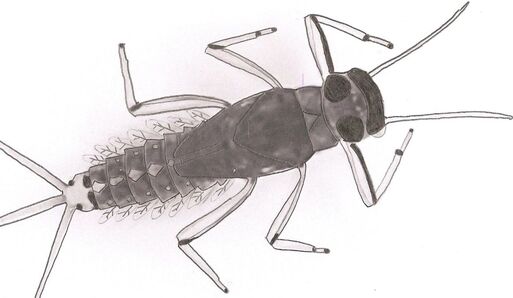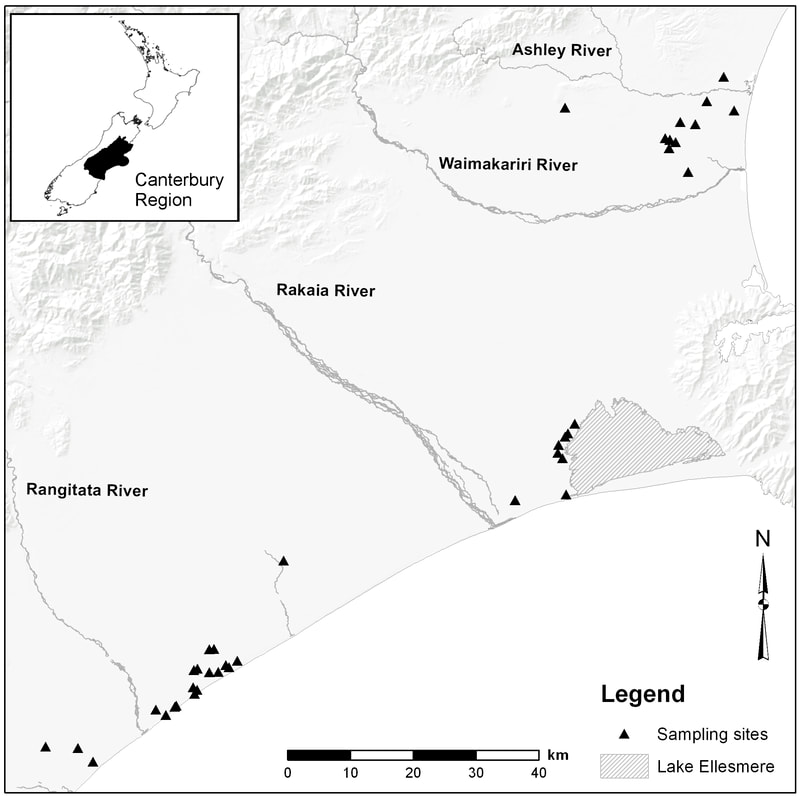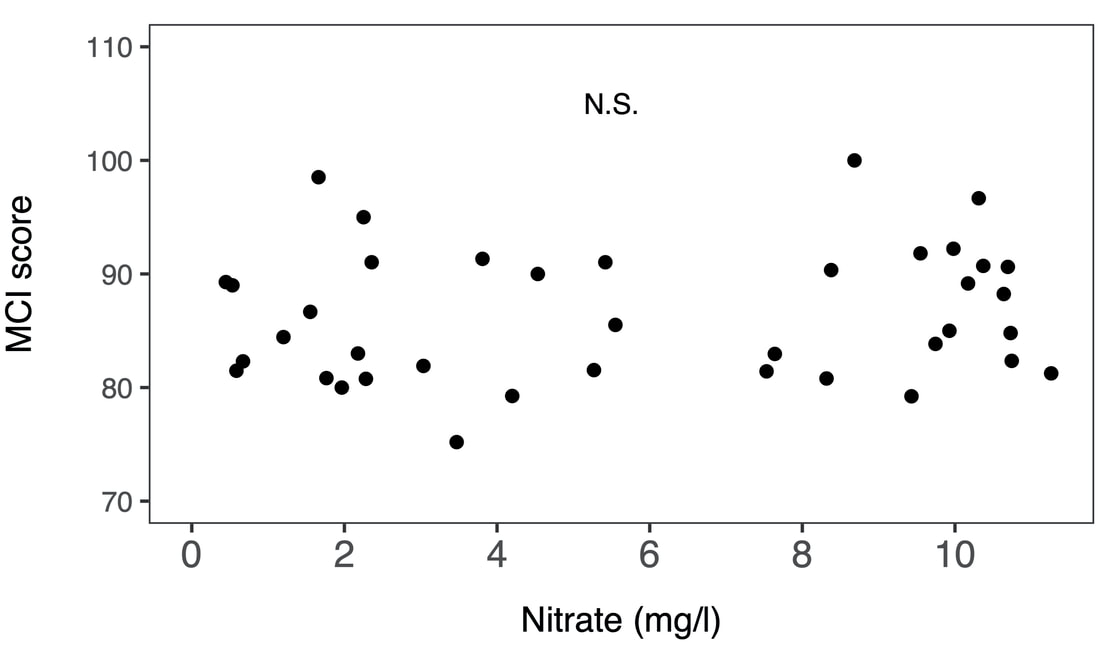Detecting High Nitrate Impacts
with benthic invertebrates
Should freshwater managers trust biotic indices to provide an indicator of high nitrate in lowland agricultural streams, or is caution required in these systems?
These little bugs are widely used by freshwater managers to assess stream health globally. Their combined response to detect poor water quality can be summarised with biotic indices such as the Macroinvertebrate Community Index (MCI). However, detecting the response of biotic indices to high nitrate concentrations (i.e., > 1 mg/l) has not been rigorously tested in New Zealand.
We conducted a field survey of benthic invertebrates in 41 lowland intensively farmed Canterbury streams representing a wide nitrate gradient (0.4-11.3 mg/l) to determine if biotic indices respond in a predictable manner to increasing nitrate.
Our results show commonly used biotic indices were not able to detect any effects of high nitrate (as an example, for the MCI above). We found homogenous and tolerant benthic invertebrate communities dominated and suggest the lack of any detected effects may be because taxa sensitive to nutrients have already been lost from these systems.


